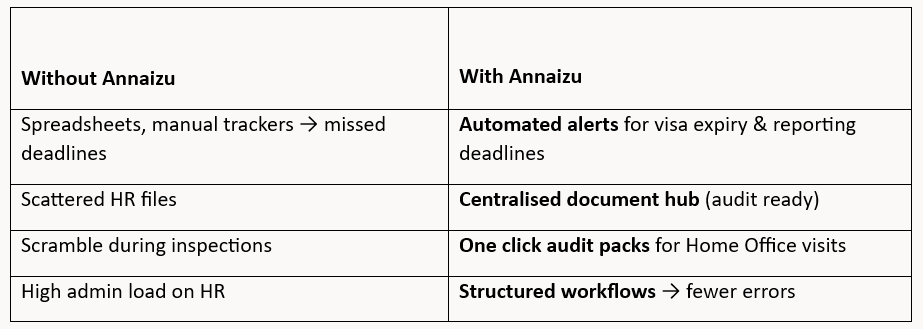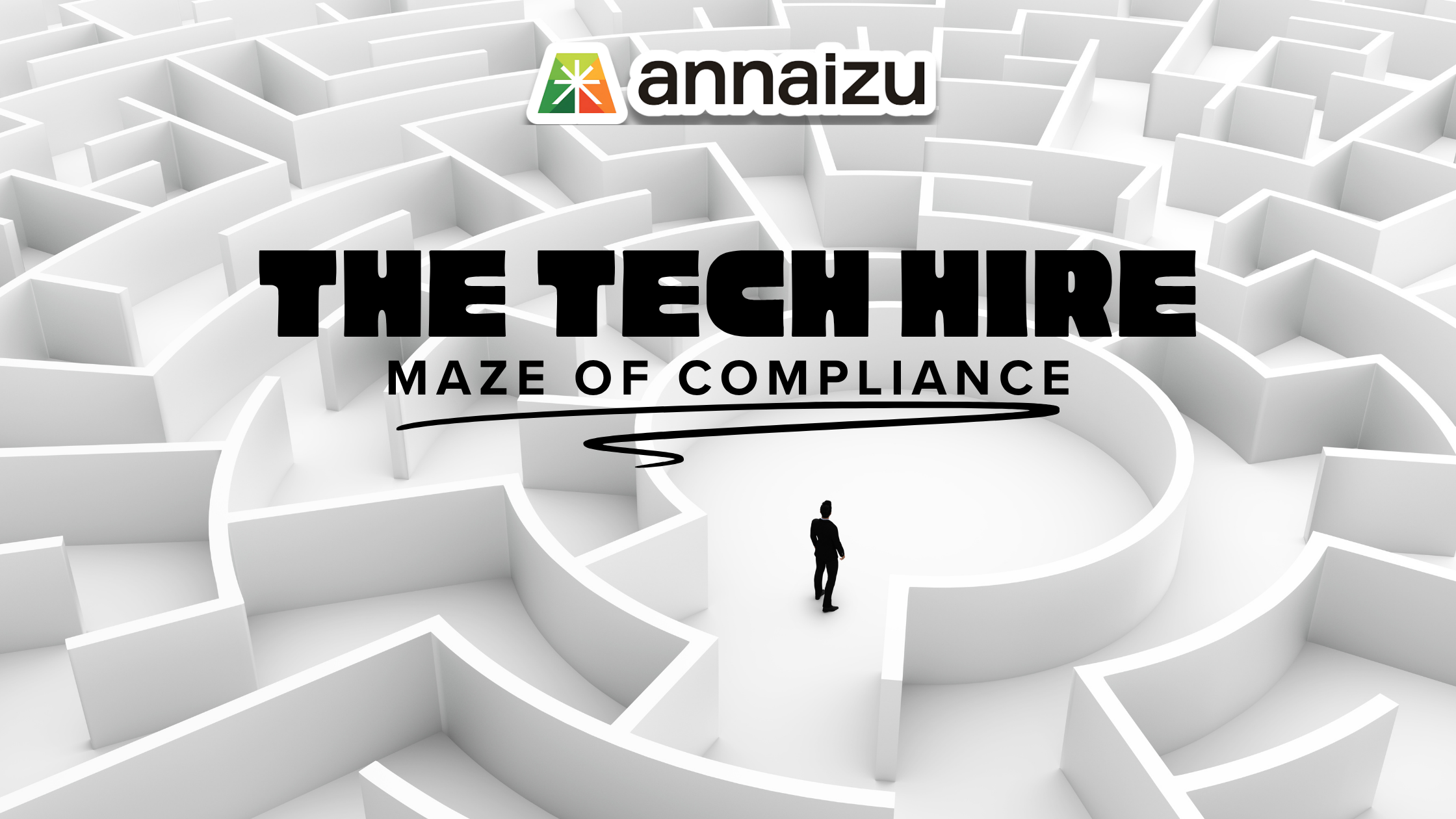Discover the importance of Annaizu Compliance Management in today's business landscape and how a Home Office compliance management platform can help your business streamline its compliance efforts, reduce risks, and stay ahead of regulations.
Hiring IT and tech professionals from abroad under a UK sponsor licence unlocks great opportunities, but also demands rigorous compliance. In the dynamic world of tech, roles evolve fast, oversight can lag. Below is a step-by-step guide to common compliance gaps and how to plug them including how annaizu supports you.
Step 1: Understand the Sponsor Licence Framework & Your Duties:
Before you sponsor any IT professional, you must fully grasp the foundation:
- You must hold a valid sponsor licence to employ non-UK nationals via routes like the Skilled Worker visa.
- Core duties of a sponsor include record-keeping, monitoring, reporting changes, cooperating with the Home Office, and ensuring roles are eligible for sponsorship.
- If you breach your sponsor duties, the Home Office may downgrade, suspend, or revoke your licence.
Key duties you must always satisfy (from GOV and policy guidance):
- Right to work checks & document retention — hold evidence you checked their authority to work in the UK.
- Monitoring & attendance — track work attendance, contact details; record absences.
- Reporting changes — within specified periods (e.g. 10 working days) you must notify UKVI through the Sponsorship Management System (SMS) of changes to job title, salary, work location, absence, or non-compliance by the employee.
- Reporting changes in your business — e.g. change of address, change in ownership, change in Authorising Officer or Key Personnel, merger, etc., within 20 working days.
- Allowing Home Office audits / inspections — they may visit unannounced, reviewing records or interviewing staff.
Because the Home Office treats the sponsor licence as a privilege, not a right, compliance must be maintained continuously, not just at application.
Step 2: Check Role & Salary Compliance
- Eligible roles: e.g. IT Business Analysts, Architects, Systems Designers (SOC 2133).
- Salary threshold (from April 2025): £54,900 median for SOC 2133 roles.

Step 3: Build Compliance into Your Hiring & Onboarding Processes
Many compliance gaps emerge from poor process design. To guard against that:
- Custom job specs & CoS mapping — don’t reuse generic roles. Map each job’s duties, salary, location, hours, and ensure CoS matches them.
- Pre-hire checks — before offering, confirm candidate’s credentials, right to work status, visa eligibility.
- Document collection at hiring — collect passport, visa status / BRP / eVisa evidence, qualifications, contract, proof of address, etc., and store securely.
- Onboarding compliance tasks — register employees in your internal monitoring system, set reminders for visa/permit expiries, track attendance, update contact details.
- Change management workflows — changes to roles, salary, duties, work location/hybrid/remote working must trigger compliance assessment and possibly reporting.
Step 4: Maintain Rigorous Record-Keeping & Monitoring
In tech environments, things shift fast role changes, remote working, promotions, new responsibilities. Gaps often appear when monitoring lags.
You should:
- Maintain Appendix D-level records (passport pages, visa/immigration status, contract, salary history, absences, contact information) per employee.
- Track attendance & absences, noting prolonged absences (e.g. more than 10 working days) and report if unapproved.
- Keep contact information up to date — address, telephone, email.
- Monitor actual duties vs job description — if an employee is undertaking duties outside of what was approved, assess whether a change of CoS or reporting is needed.
- Perform regular internal audits / health checks to catch missing documents or inconsistencies before a Home Office visit.
Step 5: Report Changes Promptly & Cooperate Actively
Missed reporting is one of the biggest causes of compliance action. To handle this:
- Use the Sponsorship Management System (SMS) for all reporting — this is the Home Office’s mandated channel.
- Report changes within the timeframe required (e.g. 10 working days for many worker changes, 20 days for business changes).
- Be transparent and proactive. If issues arise (employee breach, visa condition violation), report them failure to report is worse than admitting a problem.
- When visited by compliance officers, cooperate fully: grant access to documents, permit interviews, provide explanations.
Step 6: Prepare for Audits & Enforcement
Even with the best systems, sponsors can face compliance visits or audits. In the tech sector, such inspections may review:
- Whether the employee’s actual duties match those approved.
- Whether records are complete and accessible.
- Whether attendance, contact, and absence logs are accurate.
- Whether remote working / hybrid arrangements have adequate oversight.
- Whether all changes were reported and within time.
Given the Home Office’s stepped up enforcement, it’s prudent to run mock audits (internal or external) regularly to simulate what an inspector might request. Between July 2024 and June 2025, 1,948 sponsor licences were revoked, more than double the previous year.
How annaizu Helps You Bridge These Gaps

.png)
Hiring IT professionals from abroad is vital for the UK’s tech sector, but every hire brings compliance responsibility. By combining solid processes with digital tools like annaizu, employers can bridge compliance gaps, reduce licence risk, and focus on innovation without fearing Home Office enforcement.






.svg)